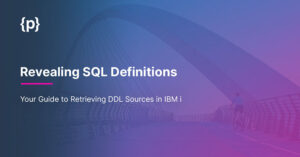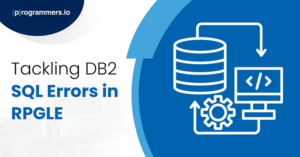The end of support for Windows Server 2008/Rz and SQL Server 2008/Rz brings a ton of new challenges for organizations. Organizations that had previous relied on SQL servers now face a host of challenges related to security, cost, regulatory offerings and much more. Organizations are now on the search of techniques they can follow to update their systems and move towards greener pastures elsewhere. Organizations and developers want ways and techniques they can follow to upgrade servers to the more recent and developed versions of SQL and Windows.
This also brings forth a great opportunity for organizations to work on modernization techniques and move their infrastructure using Azure. The opportunities are endless and give organizations a way out of the conundrum.
There are multiple options that organizations can choose from when performing SQL migration in Azure. These options include:
- Azure SQL Database
- SQL server on Azure VM
- Azure SQL Managed Instance
In this article, we help you study your requirements and understand the requirements you can depend on. The features offered within the service can help grow operations and lead to a greater return on effort.
Migrating On-Premise SQL
As we have mentioned above, there are multiple options that organizations can choose from when performing SQL migration in Azure. These options include:
- Azure SQL Database
- Azure SQL Managed Instance
- SQL server on Azure VM
These options are discussed in greater detail below:
SQL Server on Azure VM
The migration process for SQL server for your on-premise solution can be managed through Azure VM. The migration focuses on the broad definition of infrastructure as a service and gives you the option to run SQL servers within a virtual machine managed by Azure. The customer is responsible for backups, patching, maintenance and upgrades to the database of the server.
The solutions offered on the virtual machines within Azure are ready for all applications. Users can lift and shift their applications to the cloud without incurring any new changes. The virtual machine provided by SQL can give users full administrative control over the underlying OS and the SQL server for migrating to Azure. The SQL servers on Azure VM are comprehensive in nature and can speed up the process. The approach can prove to be beneficial in the long run and can eventually reduce the hindrances in cloud optimization.
Azure SQL Managed Instance or MI
Azure SQL MI is a futuristic Platform as a Service or PaaS solution. The intelligent solution is highly scalable in nature and can provide realistic solutions in the long run. SQL managed instance or MI gives users and customers the added leverage of shifting their current on-premise applications to the cloud without any major database changes and without any additional application.
SQL managed instance or MI comes with all additional capabilities and can reduce the wastage of time and resources in the process. The patch preserves all PaaS capabilities and provides users with automatic patching, automated backups, version updates, high provision of solutions and TCO. The combination of solutions gives you a comprehensive offer for a lifetime.
Azure SQL Database
The last option for migration is through Azure SQL database. This solution is achieved through a fully managed PaaS offering that oversees most of the upgradation functions, such as backup, patching, upgrades and user involvement. Azure SQL database is always in operations and is patched with 99.99 percent availability. Applications usually require re-writes before they are comprehensively shifted to the database for Azure SQL.
The SQL database is deployed through two different options:
- For starters, the SQL database is offered as a single database that comes with its own set of resources. The resources are managed through a logical SQL server and can provide regulated solutions. A single database on the server is similar to a container within the SQL server. This option is optimized for all modern applications and can help meet the developmental needs of all new applications born on the cloud.
- The database is also offered through an elastic pool. The elastic pool comes with a set of shared resources provided through a dedicated SQL server. This option is optimized and regulated for modern development of applications. The multi-tenant SaaS application solution is used for this purpose.
Summarizing Options
If you want to migrate your On-premise SQL in Azure without letting go of administrative control, the SQL Server VM is your best option. The SQL Server VM comes with a lift and shift methodology, which cuts down on the extra effort required by Azure SQL developers.
If your development team wants to keep their eyes on the application without letting go of the end goal and the overheads, then the SQL Managed Instance or MI is your option. The MI solution helps safeguard you from the management of upgrades, infrastructure, backups and other app resources.
The Azure SQL Database is ideally suited for the development of cloud native applications and multi-role apps.
The SQL MI and SQL database are both sold within Azure and are available at different service tiers. Each service tier comes with its own unique characteristics. Both these solutions provide built-in intelligence, which can help cut down on workload and provide running expenses on the go. Some of the built-in specs within Azure DB and MI include proactive monitoring and early detection of database degradation. Both these solutions can work well in the long run and can help your migration through assisted intelligence.




